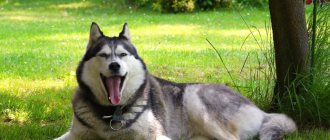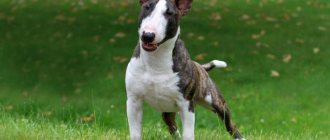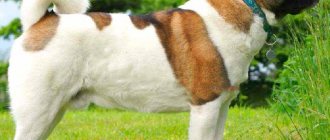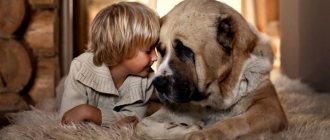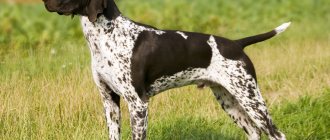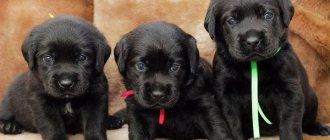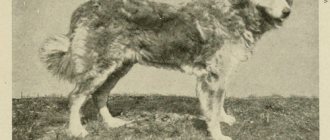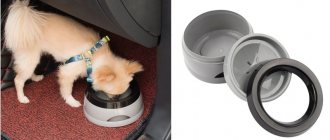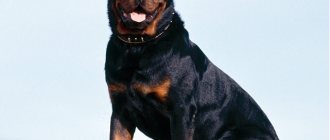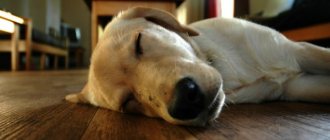Hunting with shorthaired pointer
Share this article
If you are a fan of hunting birds and animals in difficult wetlands, you simply need to buy a shorthaired pointer puppy. Such a dog will not only become a good hunting assistant, but will also win your heart forever.
- About the breed How to train and teach
- Bird hunting
History of the breed
The Shorthaired Pointer (German Shorthaired Pointer) dog breed was developed in Germany from the bloodlines of older German Shorthaired Pointers that were bred from Spanish Pointing Dogs and dogs of local German origin.
Pointing dogs are dogs that have an innate tendency to stand up to game. The very first pointing dogs appeared in the Mediterranean countries several hundred years ago. In those old days, pointing dogs were used to hunt birds using nets and fowls. The heyday of pointing breeds occurred after the advent of firearms and the beginning of their use in hunting game birds.
From Spain, Italy and France, the first pointing dogs gradually spread throughout Europe. Some of these dogs came to Great Britain and became the ancestors of the island pointing breeds (pointers and setters), the other part came to Flanders and other European countries and became the ancestors of continental pointing dogs.
From Flanders, the ancestors of German pointing dogs came to German estates, where the Württemberg pointer appeared from crossing with local Hanoverian hounds, and later with the Spanish Burgos Perdigeros. From which, after its ennoblement with the blood of a pointer, the shorthaired pointer appeared.
The Germans, with their usual thoroughness, began breeding work with German shorthaired pointers, which was aimed at breeding dogs of a lighter type, accelerating their speed and increasing their sense of smell.
A serious basis for the development of the shorthaired pointer breed was the creation in 1897 of the “Studbook of the German Shorthaired Pointer”, in which Prince Albert Solms-Braunfels collected the characteristics of the breed, rules for evaluation and field testing of dogs of the shorthaired pointer breed.
Today, the German Shorthaired Pointer is still being worked on to breed, improve the breed and test this wonderful breed of dog. The shorthaired pointer has become one of the most common breeds of pointing dogs in the world. The popularity of shorthaired pointers in our country is growing every year.
Character of shorthaired pointers
Hardworking and elegant, the Kurzaachs are distinguished by their perseverance. They will not return to their owner without prey, and they rush after it at the first call. This is the best dog for hunting, having a keen sense of smell, energetic with an innate tendency to fetch, whether from land or from water.
Despite its excellent hunting qualities, the dog is ideal for a family. But, it is advisable to keep it in your house or in a large apartment. This smart dog, who is also very clean, unpretentious, and quick-witted, never shows aggression towards household members. This dog surprisingly successfully combines mobility and a certain lethargy and timidity. Not so long ago, the breed began to be used as a sports and sled dog, which is liked by both people and dogs.
Appearance
The breed standard establishes the breed characteristics that the Shorthaired Pointer must meet:
- The shorthaired pointer is a strongly built dog, dry, proportionally built, the bones are strong, but not rough. The shorthaired pointer has well-developed muscles and free, easy movements.
- The shorthaired pointer is a large breed of dog, the height of a male at the withers is 62-66 cm, females are 58-63 cm.
- The shorthaired pointer should not be too thin like a greyhound, but it should not be too heavy either. A male should weigh 25-32 kg, a female 20-27 kg.
- The bones and muscles should be well developed, the shorthaired pointer's skin should be quite thick, dense, without folds.
- The shorthaired pointer's chest is developed, deep, reaching to the elbows, and moderately wide. The ribs are arched. The false ribs are quite well developed and form a smooth transition from the chest to the abdomen.
- The back is straight, strong, wide, muscular, the spinous processes of the vertebrae are hidden by muscles. The withers are well defined. The topline is straight, slightly sloping. The croup is wide, long, slightly sloping. The loin is short, wide, and muscular. The belly is moderately tucked, but not to the wasp waist.
- The shorthaired pointer's head is dry, neither heavy nor light, proportional to the body and gender of the dog. The occipital protuberance is not very pronounced, the brow ridges are distinct, but not too pronounced. Smooth transition from forehead to muzzle.
- The muzzle is long, not too wide, not too narrow, slightly tapering towards the nose, but not too sharp. The muzzle has a hump, which is more pronounced in males. The lips are not heavy, the upper lip slightly covers the lower.
- The nose is wide and matches the base color. The nostrils are mobile and well developed.
- The teeth are white, healthy, and have a regular scissor bite. 42 strong teeth.
- The Shorthaired Pointer's eyes are medium-sized, slanted, not protruding and not deep-set. The eye color should be brown or light brown.
- The ears are hanging, of medium length, set high and wide. The length should reach the corner of the lips. They fit tightly to the head, the ends of the ears are blunt-rounded.
- The neck is of medium length, in harmony with the general appearance of the dog, muscular, set at an angle of 40 degrees to the body. The neck expands from the dog's head to the shoulders, is slightly arched in the upper part, oval in cross section. The scruff is slightly convex.
- The front legs of the shorthaired pointer are straight when viewed from the front; when viewed from the side, they are well located under the body of the dog, dry, bony, and muscular. Long shoulder blades covered with strong muscles. Elbows point straight back.
- The hind legs, when viewed from behind, are straight, parallel to each other. Long, wide and muscular thighs, with a well-defined hip angle. Strong knee joints. The lower legs are long, muscular, with clearly defined tendons.
- The front and hind feet are round to oval, arched, with close-fitting toes. The paw pads are strong and rough. The claws are strong.
- The shorthaired pointer's tail is set high, thicker at the base, and most often docked. When the dog is excited, it holds its tail in a horizontal position or slightly above the line of the back. In some countries, tail docking is illegal.
- The shorthaired pointer's coat is straight, short, shiny, hard to the touch and dense. The coat fits tightly to the dog's body. The length of the hair on the body is 1.5-2 cm, on the ears and head the hair is shorter (up to 1 cm) and much softer. The hair on the legs is shorter and coarser than on the dog's body.
- The color of the shorthaired pointer can vary greatly, the main types of coloring are: coffee piebald, coffee speckled, coffee gray, solid coffee. German hunters prefer dogs with darker shades of coffee, often even solid coffee. It is believed that more contrasting colors are more noticeable in the autumn forest or swamp, especially at twilight. The color of the shorthaired pointer may contain spots, and their location can be very different. Large spots may be located on the dog's back. Smaller spots may be scattered throughout the dog's body.
About the breed
Characteristic signs of a purebred German pointer are a muscular and lean body on high and strong legs, an elongated muzzle and hanging ears. According to the appearance standard adopted in 1879, the color of the shorthaired pointer assumes the presence of spots of color from black to light beige. Shorthaired Pointers have an average build, their height does not exceed 66 cm, and their weight ranges from 25–32 kg.
By nature, Shorthaired Pointers are quite obedient and friendly. They are suitable for families with children, can get along with other animals and feel comfortable around other dogs. The German pointer is a strong and hardy animal that does not require special conditions for maintenance and care. To make your pet happy, you just need to give him the opportunity to do what he loves - hunting.
How to train and teach
In order for the puppy's hunting instincts to awaken, he needs to be taken for walks. On the street you can also do training, which is simply necessary for the shorthaired pointer. Good training is the key to successful hunting in the future. When raising a hunting dog, it is important to pay attention to learning how to present prey and how to execute the “down” command. The pet must also master the stance, which must be held until the owner allows him to leave it.
Important! In the process of training a cop, it is necessary to follow a sequence of actions. The owner must treat the dog with understanding and not show impatience or dissatisfaction. The Shorthaired Pointer will be offended if he is treated too harshly and often reprimanded, and it will simply be impossible to improve the relationship.
Temperament
The Shorthaired Pointer dog has a balanced, reserved, not nervous, not timid or aggressive character.
The shorthaired pointer has a tendency to dominate, the owner of such a dog must be a strong-willed person, with a strong character, capable of establishing and maintaining his leadership over the shorthaired pointer; if the owner cannot become a leader for his dog, then such a dog can get out of control and become unmanageable.
The shorthaired pointer constantly needs intellectual and physical work, without this the dog will get bored and throw out its unspent energy in the house.
An adult, well-bred shorthaired pointer is a friendly dog that gets along well with children, even small ones. School-age children are the Shorthaired Pointer's best friends in active games.
The shorthaired pointer is strongly attached not only to its owner, but also to all members of his family. The shorthaired pointer must be aware of its own importance, feel needed, loved, and a full-fledged member of a friendly pack. In a critical situation, the shorthaired pointer is able to stand up both for itself and for any other member of its flock.
The shorthaired pointer has good guarding qualities; it is an excellent watchman and protector. A wary attitude towards strangers can lead to aggression, then the shorthaired pointer barks loudly at the stranger until its owner approaches. It is not recommended to develop too strong a protective instinct in a shorthaired pointer, as it can lead to a distortion in the dog’s psyche.
In order for a shorthaired pointer to get along well with other dogs, it must undergo socialization in its youth and learn to have an even attitude towards other dogs.
It is not recommended to keep cats and other pets in the house where the shorthaired pointer lives; after all, the shorthaired pointer is a hunting dog; its strong hunting instinct can turn on at any time, which will lead to dire consequences for other domestic animals.
Character traits
When choosing a method of hunting with a shorthaired pointer, you must remember that this dog is peace-loving, has a calm disposition, and is well suited for apartment living. The dog gets along well with people and has excellent contact with children and their environment.
These animals are loyal to guests or strangers, but their final reaction directly depends on the command or behavior of the owner. In general, the shorthaired pointer is a sociable dog that has difficulty surviving alone and suffers when it loses or changes owner. Therefore, you should only get such a dog if you can give it enough warmth and attention.
Advantages and disadvantages
Advantages of shorthaired pointer
The shorthaired pointer has a huge number of advantages, which have made this dog breed so popular both in our country and throughout the world:
- One of the main advantages of the shorthaired pointer is its versatility; with the shorthaired pointer you can successfully hunt a wide variety of game species, from quail and snipe to wild boar and elk. With a shorthaired pointer you can hunt marsh-meadow, field, forest, waterfowl, as well as wild animals.
- The shorthaired pointer has excellent physical characteristics, endurance, good intellectual abilities, and is easy to train and coach.
- The Shorthaired Pointer's short, dense coat protects well from insects, does not collect thorns and does not require special care, except for regular brushing with a special brush.
Disadvantages of shorthaired pointer
With all the advantages of the shorthaired pointer, they also have some disadvantages:
- The short coat of the shorthaired pointer causes some inconvenience to the dog owner. The shorthaired pointer has a pronounced seasonal molt. Small hairs get stuck in furniture upholstery and clothing and are quite difficult to collect. It is advisable to comb the Shorthaired Pointer regularly with a special brush.
- The Shorthaired Pointer's short coat does not allow it to be kept on the street; this dog is intended for apartment living. If you decide to place the Shorthaired Pointer on the street, make a warm, heated booth for it.
- The shorthaired pointer is a dog that needs serious physical exercise, otherwise it will spend its energy in an undesirable direction. If you are not ready to provide your shorthaired pointer with long, long walks, it is better not to get such a dog.
- The shorthaired pointer's coat does not retain heat well; you need to ensure that the dog does not become hypothermic in winter or after leaving the water.
Brief description of the breed
The breed standard was adopted at the end of the nineteenth century, in 1879. A slender muscular body, strong high legs, a smooth and shiny short-haired coat of spotted color from black to light beige are the characteristic features of a thoroughbred pointing pointer. Height at the withers is up to 66 cm in males and up to 63 cm in females. The dog is beautiful, smart, hardy. Very active, holds an excellent stance, which is why it has gained its popularity among hunters.
Hunting with shorthaired pointer
- The shorthaired pointer is a breed belonging to the group of pointing dogs, that is, poultry dogs with a stance.
- The shorthaired pointer is a breed characterized by its versatility; it can work on all types of game birds and animals.
- With a shorthaired pointer you can hunt marsh and meadow game: snipe, great snipe, garcock, corncrake.
- The shorthaired pointer works on upland game: wood grouse, black grouse, hazel grouse, woodcock, pheasants.
- The shorthaired pointer works well on field game: quails, partridges.
- The shorthaired pointer swims well and has excellent retrieval ability, so it can be used for hunting waterfowl.
- Thanks to its dense and stiff coat, the shorthaired pointer is not afraid of insects, but its short coat does not protect well from thorns and sedges.
- When moving, it can withstand frost down to -20 degrees, but if the shorthaired pointer is motionless, especially in the wind, it can quickly freeze.
- In excitement, he is able to rush into icy water after game, but after leaving the water he can freeze, you need to wipe him dry and cover him with a cape or blanket.
- As a universal breed of pointers, shorthaired pointers can search for wounded animals using a blood trail and hunt hares and foxes.
- Many owners bait the shorthaired pointer for wild boar and elk. Whether to do this or not is a question that the owner must decide for himself. Many people believe that letting a shorthaired pointer near a wild boar is too dangerous, after all, this is not an aviary gilt. The shorthaired pointer cannot be compared with a good husky in terms of work on ungulates.
- When choosing and purchasing a shorthaired pointer puppy, be sure to study its pedigree and make sure that the puppy’s ancestors have working diplomas. It is better to involve a specialist in studying the puppy’s documents, who can check the information contained there through his own channels. It will be very good if you watch the puppy’s parents at work, either on a real hunt or in field trials.
- Many shorthaired pointer lovers buy puppies or even adult dogs abroad, most often in Germany, Austria and other European countries.
- It will be better if a professional trainer handles the shorthaired pointer's training; even better if you do it yourself, but under the supervision of an experienced trainer.
Real hunting with shorthaired pointer after training
Many online videos for hunters offer videos of how the Shorthaired Pointer behaves during a hunt. Working in conjunction with him while hunting game is a true pleasure for the hunter and a reward for his efforts. The pointer is very adventurous, she easily searches for a scent and quickly brings game. The effort put into training your dog will give you the opportunity to see your dog completely dedicated to the hunt. In everyday life, the shorthaired pointer is a fairly calm dog, but hunting with a shorthaired pointer shows that it is quite playful. Even in bad weather, he rushes after game with zeal. With this breed of dog it is easy to hunt wading birds, in particular woodcocks, corncrakes, snipes, etc. The “swamp king” is considered to be the great snipe, which is capable of holding the dog’s stance for a long time. When this bird is lifted on its wing, it does not move over a long distance, so if it misses, you need to point the dog at the snipe. When hunting a great snipe, the shorthaired pointer looks for places where prey accumulates, then noticeably reduces its speed and switches to a slow gait. The dog collects carcasses one after another under hunting shots. It should be emphasized that an experienced shorthaired pointer can hunt not only birds, but also fur-bearing animals, in particular a hare, as well as a deer. In addition, such a dog feels comfortable in any climate. Video of a shorthaired pointer hunting. Successful hunting with shorthaired pointer is the result of continuous training. This pet quickly becomes attached to a person, and if the owner devotes a lot of time to him, the dog tries in every possible way to please him. A dog of this breed, with a properly built relationship, turns into a reliable friend and becomes the owner’s best companion during the hunt.
Did you like it? Share on social networks!
We recommend reading
- Features of training a drathaar
- How to get a hunting license for the first time
- Which hunting bandolier should you choose? Types of bandoliers
- ← Everything about cleaning a gun
- Training a husky for hunting →
Features of training and education
The Shorthaired Pointer is a dog with an open character, but prone to withdrawing into himself. Any shorthaired pointer training begins with establishing close contact and trust between the dog and its owner.- The shorthaired pointer is a very active dog, puppies and young dogs of this breed are literally overflowing with energy. Before starting training with a dog, you need to give it the opportunity to throw out excess energy, and only after that begin training.
- Training a shorthaired pointer gives pleasure to its owner, the dog's high intelligence, passion for work, good contact between the shorthaired pointer and a person, all this quickly leads to success, which pleases the owner.
- The shorthaired pointer easily masters the general training course, but for this its owner will need more time and persistence than when training a dog of another breed.
- The shorthaired pointer perfectly senses the mood of the owner, which is transmitted to the dog; if you are tired or irritated, then it is better not to train the dog at all on this day, nothing good will come of it.
- An overly strict punishment or a long, tedious drill can lead to a state of “I don’t hear anything, I don’t understand anything, I can’t do anything.” Don't let your dog get into this state.
- The shorthaired pointer must understand his position in the pack; sometimes he can try to become the leader of the pack; such attempts must be immediately suppressed by pinning the dog to the ground.
- Punishment of the Shorthaired Pointer should first of all be verbal, with the correct intonation. Mechanical impact (pressing the dog to the ground, pulling the leash) is acceptable in extreme cases. There is no need to hit the shorthaired pointer.
- The training of shorthaired pointers should be done by a professional who knows the specifics of training continental pointers. The best option is when the dog owner himself does the training under the guidance of an experienced trainer. Incorrect training can quickly ruin a good dog.
general characteristics
Hunting with shorthaired pointers has become popular due to the fact that these dogs are natural hunters. They have excellent instincts, excellent endurance and patience. Additional advantages of this breed are precise execution of commands, excellent obedience, and tracking. Training this dog is not burdensome, since he is naturally intelligent and obedient.
The main purpose of this type of hunting breed is to search for and capture waterfowl. Shorthaired Pointers' wool gets wet very slowly and dries quickly. Strong and short limbs with membranes in the interdigital space provide good swimming ability with the ability to climb the most slippery and swampy parts of the coasts.
The breed of dog in question has a distinctive feature - when entering a stance, the animal abruptly stops and freezes. The dog is able to stand in this position for a long time without being distracted by any extraneous things. A pet can come out of such an enchanting stupor only at the command of the owner or by catching living creatures.
Maintenance and care
When keeping a shorthaired pointer in your home, you should pay attention to some points:
- Feeding the Shorthaired Pointer should be complete and properly balanced, no matter whether you feed the dog with specialized dog food or natural food.
- The shorthaired pointer, like any pointer, should not be overfed; carefully monitor the dog’s weight, try to maintain it within the breed norm: for a male 25-32 kg, for a female 20-27 kg.
- The Shorthaired Pointer is a short-haired breed of dog that has a pronounced seasonal shedding. It is important to properly care for the shorthaired pointer's coat. Two or three times a week, the Shorthaired Pointer should be combed with a special brush or massage mitten. During the shedding period, comb your dog every day, this will rid you of hair in the apartment.
- The Shorthaired Pointer should be bathed no more than once a month. Bathing too often will cause your dog's coat to lose its natural shine due to the loss of the fatty coating that protects the dog's coat from dirt. When bathing a shorthaired pointer, it is advisable to use unscented shampoo so that the dog does not lose its hunting sense.
- The shorthaired pointer's floppy ears require constant attention from the dog owner. They should always be dry and clean. Dirt from the ears is removed with a cotton swab or damp cotton pad. If you see that your shorthaired pointer is scratching its ears a lot, contact your veterinarian; your dog may have ear mites.
- Keep an eye on the shorthaired pointer's eyes; they should be shiny and clean. To care for your eyes, you can wipe them with a cotton pad soaked in weak tea. If the shorthaired pointer's eyes are very watery or festered, the dog should be taken to the vet immediately.
- In the summer, the shorthaired pointer's claws grind down on the asphalt on long walks; in winter, you may have to trim the claws with a nail clipper once a month.
- It is better to keep the shorthaired pointer in a warm apartment; if you are going to keep the dog outside, in an enclosure, he will definitely need a heated kennel.
- The shorthaired pointer needs long, serious walks; just a walk in the yard will not work. He needs serious physical activity, without it everything will result in the destruction of the apartment, aggression and stress from boredom. The shorthaired pointer is created for hunting; if the owner cannot hunt with him, then he needs to find some kind of alternative that replaces hunting.
- When walking in the city, the shorthaired pointer must be on a leash. There are too many dangers in the city; if a shorthaired pointer decides to chase a cat, it will be very difficult to stop him.
- When walking your dog in winter or in heavy rain, it is advisable to wear a dog overall or blanket. The shorthaired pointer's coat does not retain heat well. While moving, the shorthaired pointer does not freeze for a long time, but as soon as it starts to walk or stops, it can quickly become hypothermic.
- The German pointer needs her own personal place, where the dog should feel like a master. When the dog is in its place, no one should disturb or disturb it.
Upbringing
In order for hunting hares with shorthaired pointers in winter and summer to be enjoyable, you need to take care of the timely training of the dog. This process should begin from puppyhood, given that animals are highly trainable. The main thing is that the little four-legged hunter immediately clearly understands what is possible and what is not. After this, they begin to teach the dog basic commands.
Puppies are distinguished not only by their intelligence, but also by their sociability. They always strive to be close to their owner, which allows them to create a friendly and comfortable environment from the early months. It is at this moment that an attitude towards understanding subordination and obedience should be introduced. During walks, puppies should not be allowed to be distracted for no reason by birds, animals or foreign objects. Otherwise, in “combat” conditions, they will lose dexterity and concentration, going off in pursuit rather than aiming at patient work.

